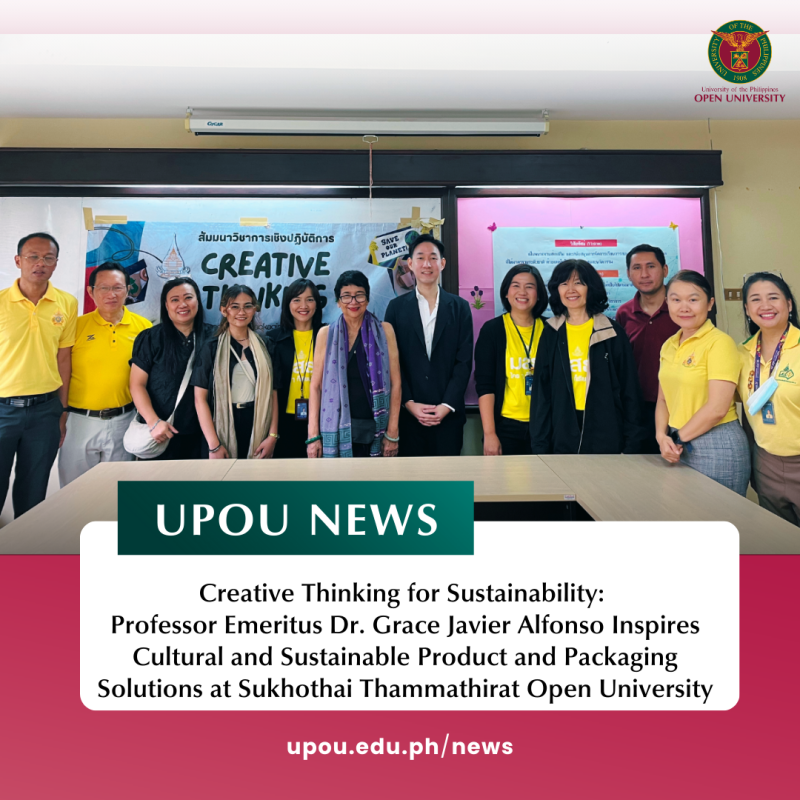
“Creative thinking involves divergent thinking, exploring multiple perspectives through different lenses, and questioning and expanding conventional thought to push its boundaries while maintaining its original spirit and identity,” stated Dr. Grace Javier Alfonso, University of the Philippines Open University (UPOU) Professor Emeritus, during her lecture on “Creative Thinking of Product and Packaging Sustainability” at the practical academic seminar hosted by Sukhothai Thammathirat Open University (STOU) on 2-3 July 2024.
The two-day academic seminar began with a welcome and an introduction to the STOU School of Science and Technology. Dr. Alfonso, along with the UPOU team—Ms. Shaira Tanay, University Research Associate II, and Ms. Agnes Mejia, Administrative Officer IV—met with the faculty members and staff of the department. During the overview, the Dean, Assistant Professor Dr. Poom Juasiripukdee, outlined the initiative’s mission: developing packaging designs for products from the Bang Tanai Community and Wattal Primary School.
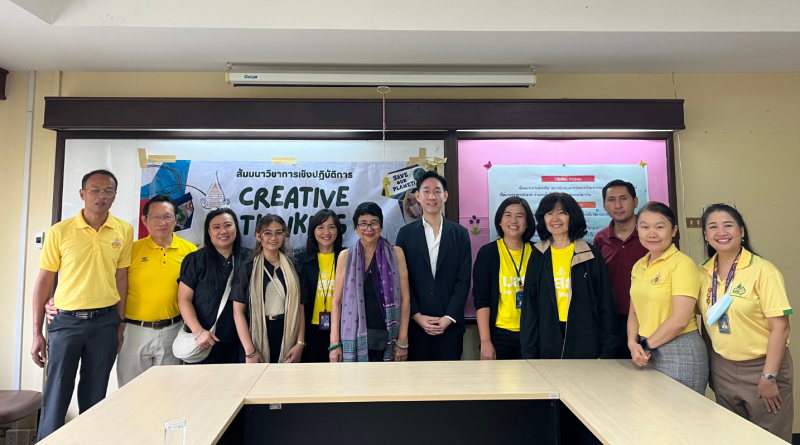
The UPOU Team, composed of Dr. Grace Alfonso, Ms. Shaira Tanay, and Ms. Agnes Mejia, along with the STOU School of Science and Technology Faculty and staff members.
After the introduction, the UPOU and STOU teams journeyed to the Bang Tanai Community in Pak Kret District, Nonthaburi Province, Thailand. They were warmly received by the Mon people, one of Southeast Asia’s oldest ethnic groups, renowned for their early civilization and significant cultural contributions, particularly in weaving and pottery.
Mrs. Wallapha Joybai, the leader of the Bang Tanai community, provided an overview of their history, heritage, culture, and artistic expression. Her presentation culminated in a display of the traditional Sabai, known as Yat Toot in the Mon language—a long piece of silk embroidered with their cultural symbols draped diagonally around the chest, covering one shoulder, with its end dropping behind the back.
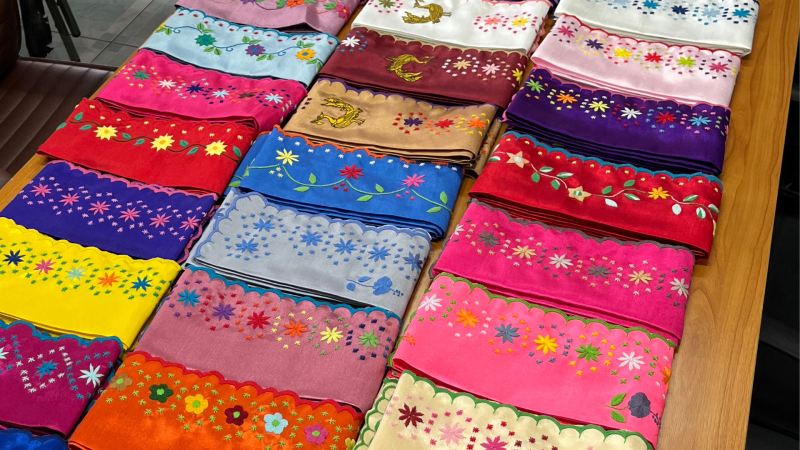
The Mon people’s traditional shawl-like garment, the “Sabai,” is embroidered with their mythological bird “hongsa” and cultural flower symbols.
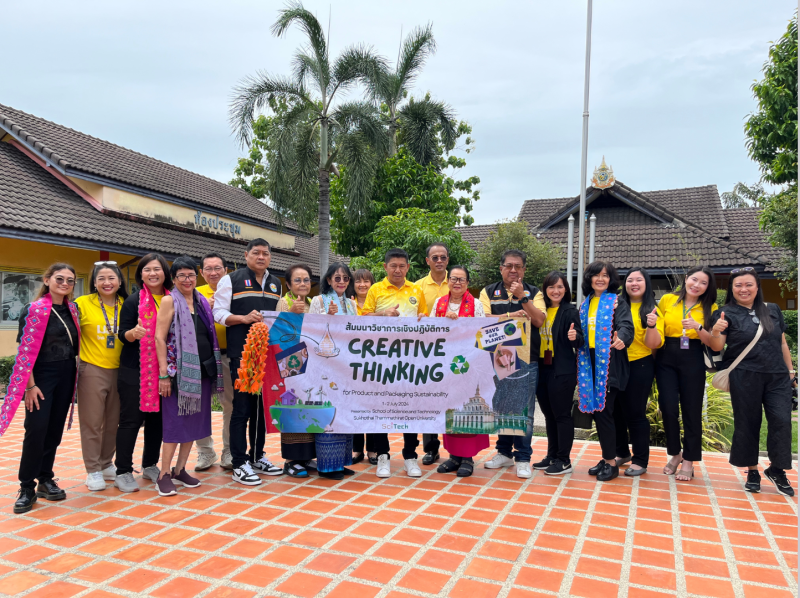
UPOU and STOU Teams with the Mon people in the Bang Tanai Community
Next, the teams visited Wattal Primary School to observe the students’ upcycling efforts to add value to discarded materials. In Thailand, the government provides a daily milk supply for primary students. Thus, this initiative is a solution to address waste management challenges posed by surplus tetra packs used for milk packaging. Students creatively transformed these packs into hats and mats, applying mathematical principles to ensure proper geometric proportions for a good fit on the head. Alternatively, the students craft tetra packs into mats suitable for hanging on walls or placing on the floor.
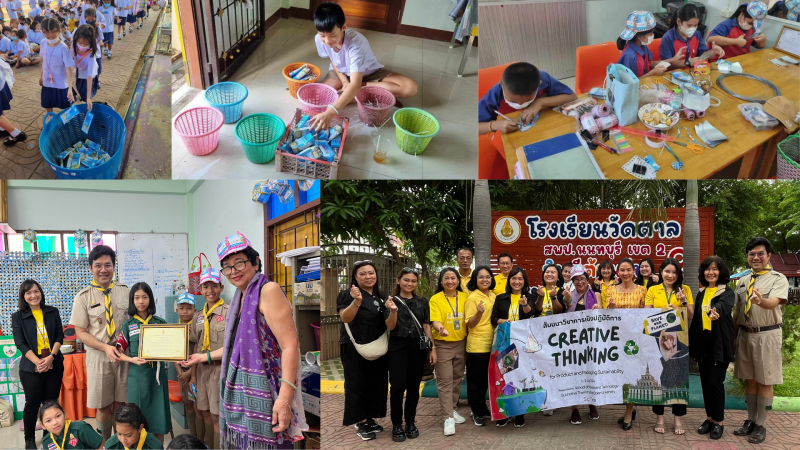
Wattal School showed the whole process of upcycling the hats to the STOU and UPOU teams.
The second day of the practical academic seminar began with a welcome address by Assistant Professor Dr. Phanompat Smitanont, the STOU President. Dr. Smitanont thanked Dr. Alfonso for coming to Thailand and sharing her expertise with them.
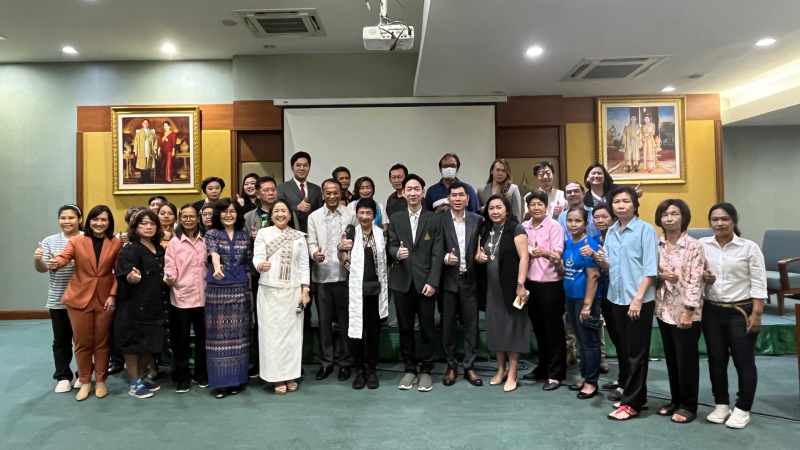
The STOU and UPOU Teams present in Dr. Alfonso’s Special Lecture during the practical academic seminar on “Creative Thinking of Product and Packaging Sustainability.”
Afterward, Dr. Alfonso delivered her Special Lecture on “Thoughts in Creative Thinking in Product Design and Packaging: Framework to Basic Principles,” where she discussed creative thinking as a paradigm shift that involves generating innovative ideas and concepts, analyzing and reflecting on them to apply in real-life practices, and solving problems with unique, divergent approaches that push conventional boundaries while maintaining their original spirit, essential for agility, sustainability, and ongoing development in rapidly changing digital times. She then discussed how creative thinking can be applied in product packaging with a focus on promotion. The promotion forms a vital marketing element that the brand uses to differentiate the product using attractive, colorful, and visually appealing packages and inform the buyer about the product’s performance, features, and benefits. She discussed the Basic Elements of Design, such as line, shape, texture, space, and color, and the Basic Principles of Design, such as rhythm, contrast, perspective, rule of thirds, and balance. Dr. Alfonso also shared how to apply these elements and principles of design in designing logos and posters for product packaging promotion. Dr. Alfonso emphasized the evolving nature of communication and the importance of designing for digital times, stating, “Our young people are digital natives, and their language now extends beyond written text to include visuals, sounds, and movements.”
Dr. Alfonso and her team then presented the sample logo for marketing the Sabai. They used the Mon people’s hongsa, a mythological water bird often depicted as a swan or duck, as the main element of the logo, adorned with the floral symbols embroidered in the Sabai. The logo highlights the rich cultural heritage of the Mon people in the Bang Tanai community.
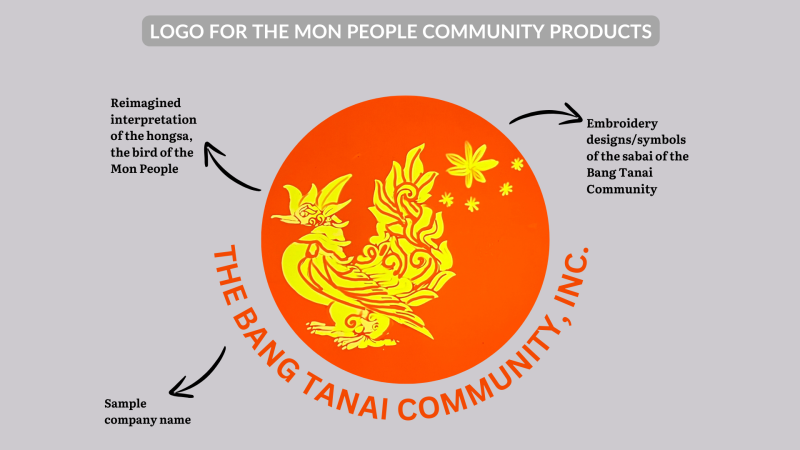
Proposed Logo for marketing the Sabai crafted by the Mon people in the Bang Tanai community
Following this, Dr. Alfonso introduced the proposed packaging for the Sabai, designed for the Bang Tanai community. She chose a paper box for its environmental friendliness and sustainability, featuring a transparent section to showcase the Sabai’s intricate embroidered designs. This feature promotes the Sabai and highlights the craftsmanship of the Mon people. The packaging includes a card that provides an overview of the Mon people and their history, a call to action to support their cultural preservation and a note of thanks to the buyer for their support. The note on the card goes, “The Mon people in Thailand are one of Southeast Asia’s oldest ethnic groups. Known for their early civilization and significant cultural contributions, they are famous for their craftsmanship, particularly in weaving and pottery. Despite facing challenges in preserving their identity in the modern era, the Mon are boldly embracing their heritage through the traditional Sabai, known as Yat Toot (in the Mon language). By purchasing your own Yat Toot, you join us in preserving and celebrating the beautiful history of the Mon people.”
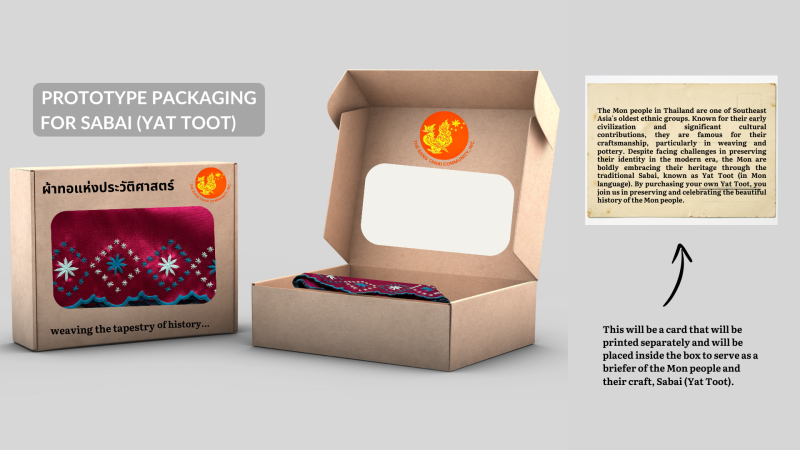
Prototype Packaging for the Sabai crafted by the Mon people in the Bang Tanai community
Furthermore, the team also designed a way to promote the upcycled hats crafted by the students of Wattal Primary School through tags. Opting for a paper tag attached to the hat for its sustainability and environmental benefits, the team ensured simplicity to complement the students’ efforts in hat-making. The tag bears the message “Small hands. Big change.” emphasizing the significant impact of the students’ contributions to sustainability efforts.
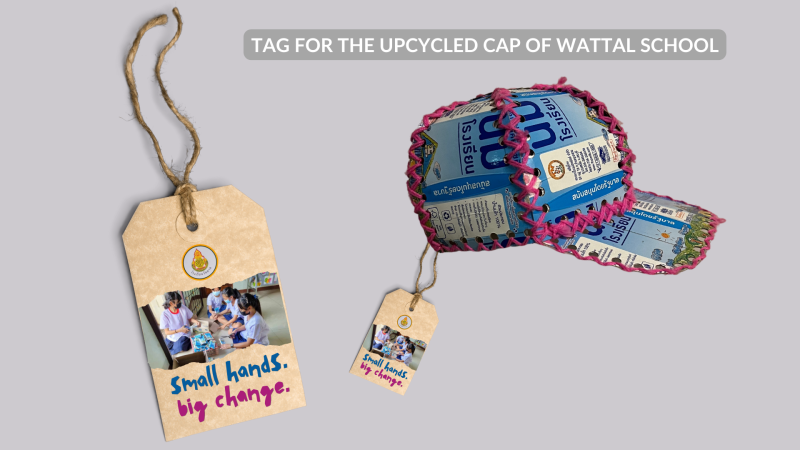
Proposed Tag for marketing the upcycled hats crafted by the students of Wattal Primary School
Dr. Alfonso concluded her presentation by showing a video summary of Day 1, including visits to the Bang Tanai Community and Wattal Primary School, where cultural preservation initiatives and student-led upcycling efforts were highlighted.
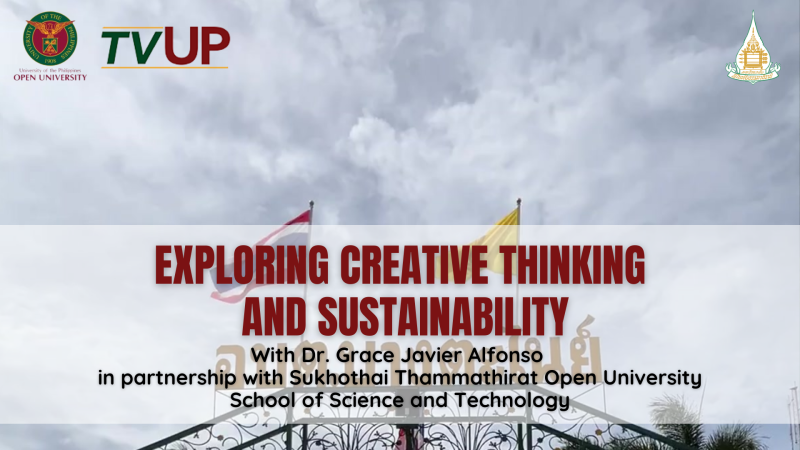
Link to the video: https://youtu.be/KWwmJyl5N1Y
The practical academic seminar showcased transformative initiatives, from revitalizing the traditional Sabai of the Mon people in Bang Tanai through thoughtful packaging highlighting their craftsmanship to empowering students at Wattal Primary School to repurpose tetra packs into valuable everyday items creatively. These efforts promote sustainable practices and situate the impact of the academe like STOU and UPOU in celebrating and supporting local communities and their cultural legacies.
Written by Shaira Tanay♦ Edited by Dr. Myra C. Almodiel and Anna Cañas-Llamas








